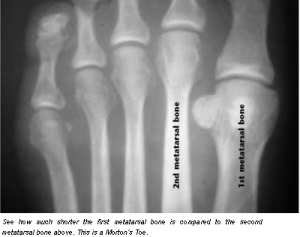Testimonials
REVIEWS OF DR. SCHULER
Simple Treatment for Painful Corns, Calluses, and Bunions
Painful Corns, Calluses, and Bunions are very common foot ailments . In his 2009 book Why You Really Hurt: It All Starts in the Foot,Dr. Burton Schuler podiatrist of Panama City, Fl
contends that having a second toe that is longer than the first one (Morton’s Toe) can lead to a range of painful conditions from the more common calluses, bunions and corns, to march fractures, night cramps (Restless Leg Syndrome), and even fibromyaglia and temporo-mandubular joint pain (TMJ). How can a seemingly innocuous occurrence like a longer second toe potentially cause other painful ailments? According to Dr. Schuler, the answer can be found in two simple words: abnormal pronation
Pronation occurs every time the foot hits the ground. Normal pronation occurs when the foot naturally adjusts to and absorbs the shock of a new walking surface. The arch starts to “pronate” (or flatten out) once it has hit the surface. During normal pronation, this flattening out eventually stops. A longer second toe will hit the ground before the first toe, and this can cause abnormal pronation, which means that the foot continues to roll inward when it hits the ground. The first toe can not do the normal job of supporting most of the foot’s weight, and extra stress is placed on the second toe. This extra stress can cause a variety of painful conditions, many of which are described on the website www.whyyoureallyhurt.com.
Some of the most common of these foot conditions are calluses, bunions, and corns. While many people assume that changing shoes will diminish the development of these common foot ailments, different shoes alone may not necessarily do the trick when you have a long second toe. Not matter what type of shoes you wear, if your foot endures abnormal pronation you may develop corns, bunions, or calluses to compensate for the stress on the foot. (The most common location for calluses is under the second metatarsal bone, where much stress is placed in the case of Morton’s Toe.
Not only is this good news for people who continue to switch shoes with little luck, but it is also good news for your pocketbook. On his website www.FootCare4U.com, Schuler suggests that in many cases a simple $2 toe pad under the first toe can reduce the development of calluses, bunions and corns. He details how to make your own pad in his book and on his website/. So you can skip the trip to the shoe store, and head to your computer or the book store instead for fast foot relief!
Normally, when we consider the size and shape of our toes, we do not readily link this to other physical conditions. But according to Dr. Burton S. Schuler, a Panama City, Florida foot doctor, podiatrist who has practiced for over 36 years, the size of our toes really matters when it comes to diagnosing and treating painful medical conditions. Dr. Schuler is a leading expert on the medical consequences of Morton’s Toe—or long second toe. This condition is named after one of the most famous doctors in the first half of the century, Dr. Dudley J. Morton, who was the first to write a research paper identifying this problem.
Dr. Schuler, graduated from the New York College of Podiatric Medicine in 1975 at the age of twenty-four, and has been in private practice ever since. In 1982, he published his first book, The Agony of De-Feet: A Podiatrist Guide to Foot Care During his thirty-five year professional career, he has written for Collier’s Encyclopedia and various podiatric journals and publications. He has been interviewed by The New York Times, First in Women, and other publications. Dr. Schuler has appeared on hundreds of radio and television programs both here and aboard. He is a Diplomate of the American Academy of Pain Management, and the National Board of Podiatric Examiners. Dr. Schuler is certified as a wound specialist from the American Academy of Wound Management. His professional and civic accomplishments have earned his inclusion in the 1999-2002 Who’s Who in America (Marquis 6BQZ2FF4AWG3

